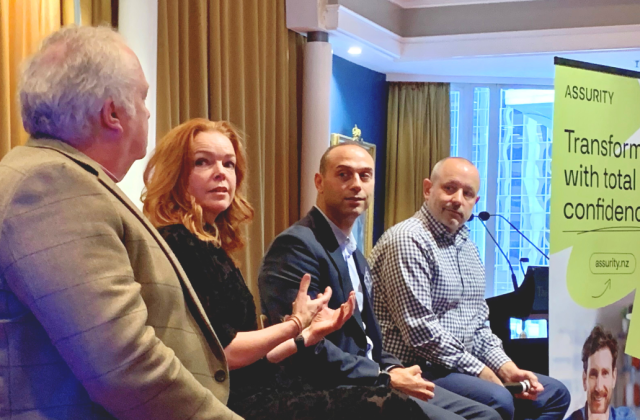Date: 20 September 2021
What does Ed Sheeran have in common with Robotic Process Automation?
Bit of a weird question, to be sure but bear with me. If you’ve ever been to an Ed Sheeran concert, you’ll see how he creates the music accompanying a song by recording hooks with his acoustic guitar and a loop pedal. The hooks combine and then playback automatically throughout the song, while Ed of course does what he does best, strumming the melody and regaling the crowd with dulcet tones.
What Ed has done with this technique is create a scalable workforce, so he doesn’t need a backing band. In simple terms, this is precisely what Robotic Process Automation (RPA) does – except, of course, for elements of your business processes.
RPA delivers a scalable workforce by helping with a range of activities, often dull and repetitive, helping people get more done at work. Done well, RPA means delivering a seamless experience for customers, while making workers look like superstars. Perfect, as Ed might observe. Check out the video to see his technique in action.
A good question (and a frequent one) is, well, where do you start? Look at areas of the business with good, stable processes with high handling and rules-based logic, but which demand manual oversight or action. You’ll need access to data in a stable, repeatable format from reliable systems. And the involvement of the people who do that manual work is crucial. As I always say, give me the 5th best person, and I will give you the 5th best bot.
Now, the interesting thing about introducing RPA in practice is that it often doesn’t have any immediate set goals. There might be a few obvious potential candidates for automation using software robots, but the reality is that it can be difficult to pinpoint precisely which, and where, are best suited.
The answer to this challenge is starting with sound business analysis taking a detailed look at your processes. After all, it is often the case that a process that seems simple, on the face of it, actually isn’t.
An approach I’ve seen in action almost reflects that famously perplexing, yet somehow insightful comment made by then-Secretary of State for Defense Donald Rumsfeld: There are known knowns; there are things we know we know. We also know there are known unknowns; that is to say, we know there are some things we do not know. But there are also unknown unknowns — there are things we do not know we don’t know.”
Yes, I know. Almost sounds like Ed repeating hooks on his loop pedal, yet it makes some sort of sense.
Applied to RPA in a business, this meant starting with internal processes where you know a difference can be made (or you think so). As you tackle those ‘known knowns’ – things which appear as obvious candidates for RPA – you’ll soon enough bump into the known unknowns, things which didn’t seem like they could benefit from the application of robotics, but with some unraveling, might just.
And in due course, the focus tends to move on from internal to external processes. These are the unknown unknowns; you start without any idea of where or how RPA can make a difference, yet with the right focus and a growing body of proven automation, the world is your oyster.
Aside from being something of a mind-bender or mental tongue twister Christopher Nolan would be proud of, this kind of process is exactly how I’ve worked with the application of RPA in the real world. It is often exploratory, experimental, and downright exciting. Because RPA can do a lot more than what immediately meets the eye, particularly when led and informed by sound business analysis.
Finally, RPA sounds terribly technical and almost as if it should be the plaything of the IT folks. Nothing could be further from the truth. In fact, RPA often fails when even the best IT people are in charge. The reason is that IT people are at understanding the technology, but it is the processes which are the engine room. Those who own the processes understand how they actually work, and it is they who must take charge of the RPA.
Read how the Sales and Marketing Manager at SBT Marketing took the lead of the company’s RPA initiative that delivered a great outcome in Phase 1.
Creating a scalable workforce means getting more done with less. It releases smart people from dull tasks. It takes cost out of the business. And it leaves you with more time for that Ed Sheeran concert, too.
Keen to learn more about how RPA can change your business? Do get in touch.













